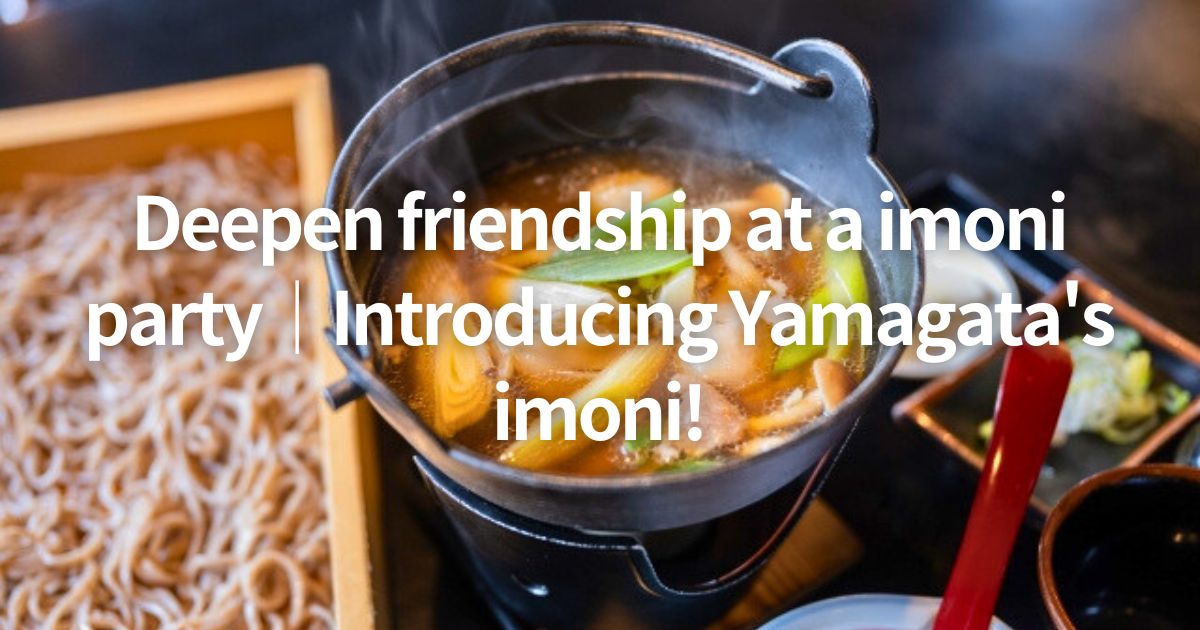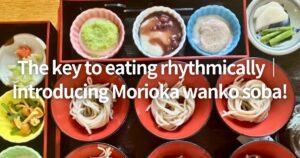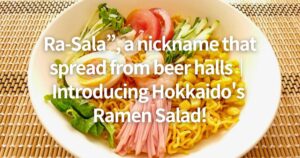There are many reasonably priced and delicious foods in the countryside compared to Tokyo, and Yamagata’s imoni ( taro soup ) is another one that I would like to recommend.
Hmm? What’s imoni? Many of you may be wondering.
Imoni is a local dish representing Yamagata with a history of nearly 400 years. It is a soy sauce-based stew of taro, beef, leeks, and konnyaku.
Although there is a basic style, there are differences such as the use of pork or miso-based soup, and the soup that melts from the ingredients has the characteristic of warming the body from the core.
In addition, imoni has the interesting aspect of being rooted in the community as a communication tool.
In this issue, we will explain the history and appealing points of Yamagata’s imoni, recommend famous restaurants and menus, and describe sightseeing spots in the area.
I hope this will help you get to know Yamagata’s imoni.
How did Yamagata’s imoni come into being in the first place?


Yamagata’s imoni is said to have originated as a hot dish that could be easily prepared outdoors by boatmen and local people on the riverbanks when the Mogamigawa River was busy with boat transportation in the late Edo period (1603-1868).
This dish, in which familiar ingredients such as taro, beef, and miso or soy sauce are simmered in a large pot, was born from the wisdom rooted in the nature and climate of the region.
The fun and warmth of being surrounded by friends is also appealing, and is the origin of today’s “imoni” parties.
Why did imoni take root in Yamagata as a local menu?


Yamagata is blessed with fertile land and abundant water, and is known as a major producer of taro.
The “imoni party,” in which people enjoy imoni with family and friends at a riverside during the autumn harvest season, has been a popular annual event in the region.
The culture of enjoying food outdoors while feeling nature has taken root and has become a symbol of community unity and exchange.
Imoni, which makes the most of local ingredients, is truly a local menu representative of Yamagata.
Heh. It’s interesting to hear the background of how people in the region interacted by gathering around imoni…
Three Attractions of Yamagata’s Imoni
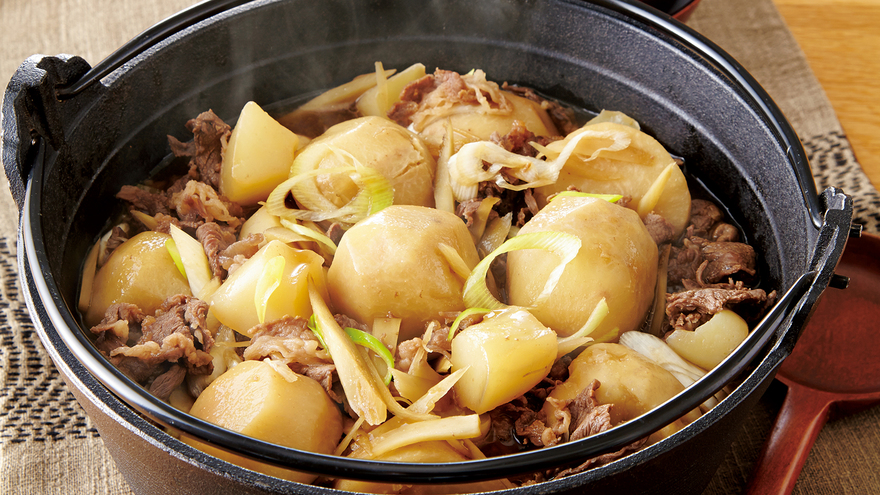

I have summarized some of the attractions of Yamagata’s imoni.
The concentrated flavor of local ingredients
Yamagata’s imoni is a local dish made with plenty of locally harvested taro, domestic beef, green onions, konnyaku, and other ingredients, simmered in a sweet and spicy soy sauce-based seasoning.
The taro and beef are especially well matched in the broth, which is infused with the flavor of the taro and beef, bringing out the best in the ingredients.
The simple yet profound flavor is appealing and widely enjoyed by everyone from children to adults.
It is a taste unique to Yamagata, where the ingredients and the climate come together.
A cultural experience called “imoni party”, a typical autumn event
In autumn in Yamagata, the “imoni party,” where people enjoy imoni stew in a pot by the riverbank, is a standard autumn tradition.
The style of gathering around a large pot with family, friends, or colleagues and enjoying a meal in the nature tinted with autumn leaves is truly a cultural experience unique to Yamagata.
The meal creates an exchange of ideas and warms the hearts of the participants.
For foreign visitors to Japan, this will be a valuable and memorable experience, allowing them to experience firsthand the four seasons of Japan and the bonds between local people.
One of the largest imoni events in Japan
The “Japan’s No. 1 Imoni Festival,” held every September in Yamagata City, is a large scale event where tens of thousands of servings of imoni are cooked in a huge 6-meter pot.
The unique sight of heavy machinery (power shovels) stirring the ingredients is a sight to behold and attracts many tourists from Japan and abroad.
Supported by the cooperation of local people, this event is a major festival filled with local pride and hospitality, and is a great opportunity to experience the charm of Japanese culture.
Indeed. The “Japan’s Best Imoni Festival” has become an annual event, and I’m starting to see a lot of international tourists…
My recommendation for the best imoni restaurants in Yamagata
In this article, I will introduce some of the best imoni restaurants in Yamagata and their recommended menus.
My recommendation for the best imoni shop and restaurants in Yamagata
My recommendation for the best imoni shop and restaurants in Yamagata
Meat Kobayashi (Sagae City)
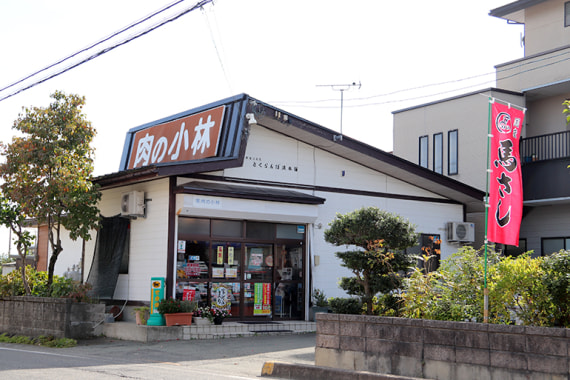

Eat-in is not available as it is a butcher shop. Retort take-out of imoni is available.
✅ Recommended Points
- Meat Kobayashi, located in Sagae City, is a long-established butcher store established in 1960, and is a private store with a strong focus on the quality of local Yamagata beef.
- It mainly handles A4 and A5 ranked Wagyu beef, and also sells meat for imoni and sukiyaki as well as handmade side dishes at its direct sales corner.
- The store is also attractive for its localized, courteous customer service and clean, warm atmosphere.
- It is a rare place where you can enjoy both Yamagata’s “meat culture” and imoni.
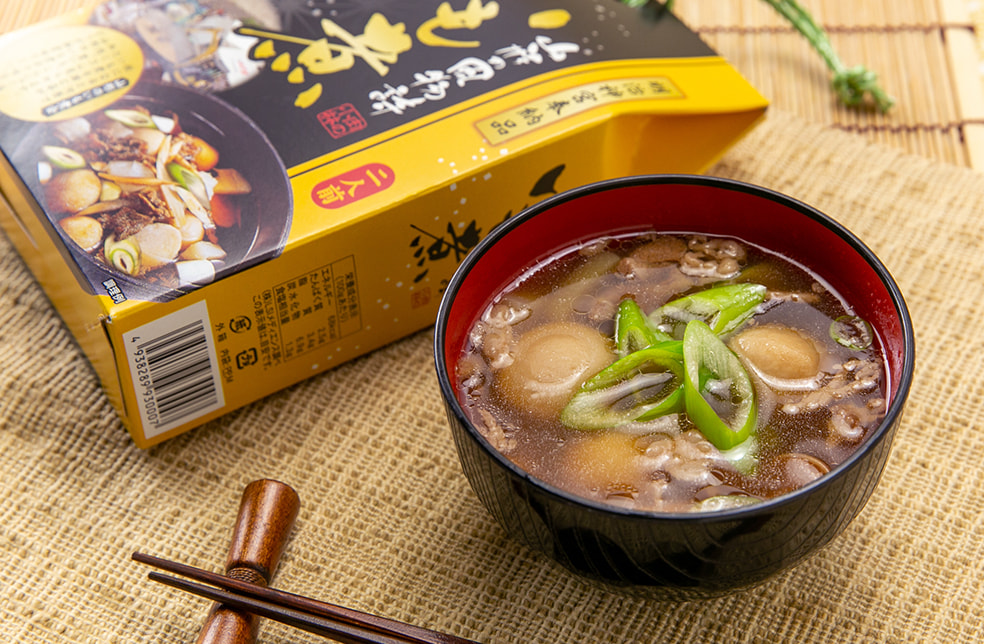

✅ Recommended menu
- Imoni style Yamagata beef imoni set
- The specialty of this restaurant is the “Imoni style Yamagata beef imoni set.
- It is filled with the delicious flavor of Yamagata beef, fluffy taro, gobo (burdock root), konnyaku (konnyaku), and naganegi (green onion), and is finished with a soy sauce-based broth.
- The flavors of the ingredients blend together to create an authentic imoni that can be enjoyed at home.
- It is vacuum-packed and can be shipped nationwide, making it a popular souvenir.
- It is a rich dish that only a butcher could make.
Yamagata’s Famous Hanazen (Yamagata City)


✅ Recommended Points
- Yamagata Famous Hanazen, located in Kasumi-cho, Yamagata City, is a privately owned izakaya with a history of over 30 years.
- The interior is decorated in a warm Japanese style with wood grain as the base color, and there are sunken kotatsu seats and counter seats where you can enjoy your meal in a relaxed atmosphere.
- Local cuisine using local ingredients and a selection of over 70 varieties of Japanese sake are popular among tourists and regular local customers.
- It is easily accessible, just a 5-minute walk from Yamagata Station.


✅ Recommended menu
- Hanazen‘s imoni
- Imoni at Hanazen is a well-known local dish of Yamagata. It is a simple yet flavorful dish of beef, taro, konnyaku, and leeks simmered in a soy sauce-based broth.
- Using fresh local ingredients, the dish is carefully prepared to bring out the best flavor of the ingredients.
- Variations include the addition of seasonal wild vegetables and seasonal vegetables, making it a perfect match with sake.
- We recommend this dish to foreign visitors to Japan to experience Yamagata’s food culture.
Yonezawa Beef Pot Oki(Yonezawa City)
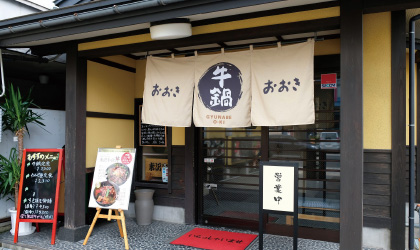

✅ Recommended Points
- Yonezawa Beef Pot Oki is located about a minute walk from Yonezawa Station and is under the direct management of Yonezawa Beef Oki, a long-established beef restaurant established in 1923.
- The restaurant has a relaxed atmosphere with a Japanese flavor, and is equipped with private rooms and sunken kotatsu seats, allowing you to enjoy your meal in a relaxed atmosphere.
- The restaurant is well known for its cuisine that makes the most of local ingredients and courteous hospitality, and is a favorite among tourists and regular local customers.


✅ Recommended menu
- Yonezawa Beef Pot Oki’s imoni
- The imoni at Yonezawa Beef Pot Oki is a sumptuous dish using Yonezawa beef, a local specialty.
- The soy sauce-based soup is filled with ingredients such as taro, konnyaku, and naganegi, and has a deep flavor infused with the deliciousness of the ingredients.
- The dish is especially popular during the fall season and provides an excellent opportunity for foreign visitors to Japan to experience Yamagata’s local cuisine.
- Photos of the restaurant’s exterior, interior, and cuisine can be viewed on the official website.
Oh. Each shop and restaurant has its own unique atmosphere and menu recommendations, so it’s really hard to decide where to go…
Column: Is it true that Imoni set a Guinness record for “Most Soup Served in 8 Hours”?


Yes, it is true!
The Guinness World Record was set for “Most soup served in 8 hours” at the 30th Imoni Festival held on September 16, 2018.
In fact, 12,695 people were served imoni in 4 hours and 30 minutes, far exceeding the standard record of 5,000 people.
Three tons of taro, 1.2 tons of beef, and 3,500 pieces of konnyaku were used, cooked in a large pot 6.5 meters in diameter.
A brand-new backhoe was used for cooking, and thorough hygiene was maintained by washing off lubricating oil and applying butter.
This record is a landmark achievement that will showcase Yamagata’s food culture to the world.
Heh. The idea of making imoni on this large scale is interesting in itself. Sounds like a fun event as well…
Places to stop by while eating imoni in Yamagata
Here are three recommended places to stop by in Yamagata during your meal.
✅ Jionji Temple (Sagae City)


This ancient temple was founded in 724 by Gyoki (724) as a scenic spot, and in 746, by the order of Emperor Shomu (746), the temple was opened by priest Baraemon.
In 2014, “Jion-ji Temple’s Old Precincts” was designated as a National Historic Site. It used to be a huge prayer temple with the largest temple territory in Tohoku (2,812 koku).
Many masterpiece Buddhist statues made between the Heian and Kamakura periods have been handed down to the temple, and the main hall and three-story pagoda, both of which are national important cultural properties, are scattered among the temple’s highlights.
The Jionji Bugaku dance performed on May 5 every year is a nationally designated Important Intangible Folk Cultural Property, and is a treasure trove of cultural assets representing Yamagata with 1,300 years of history.
✅ Yamadera Temple (Yamagata City)
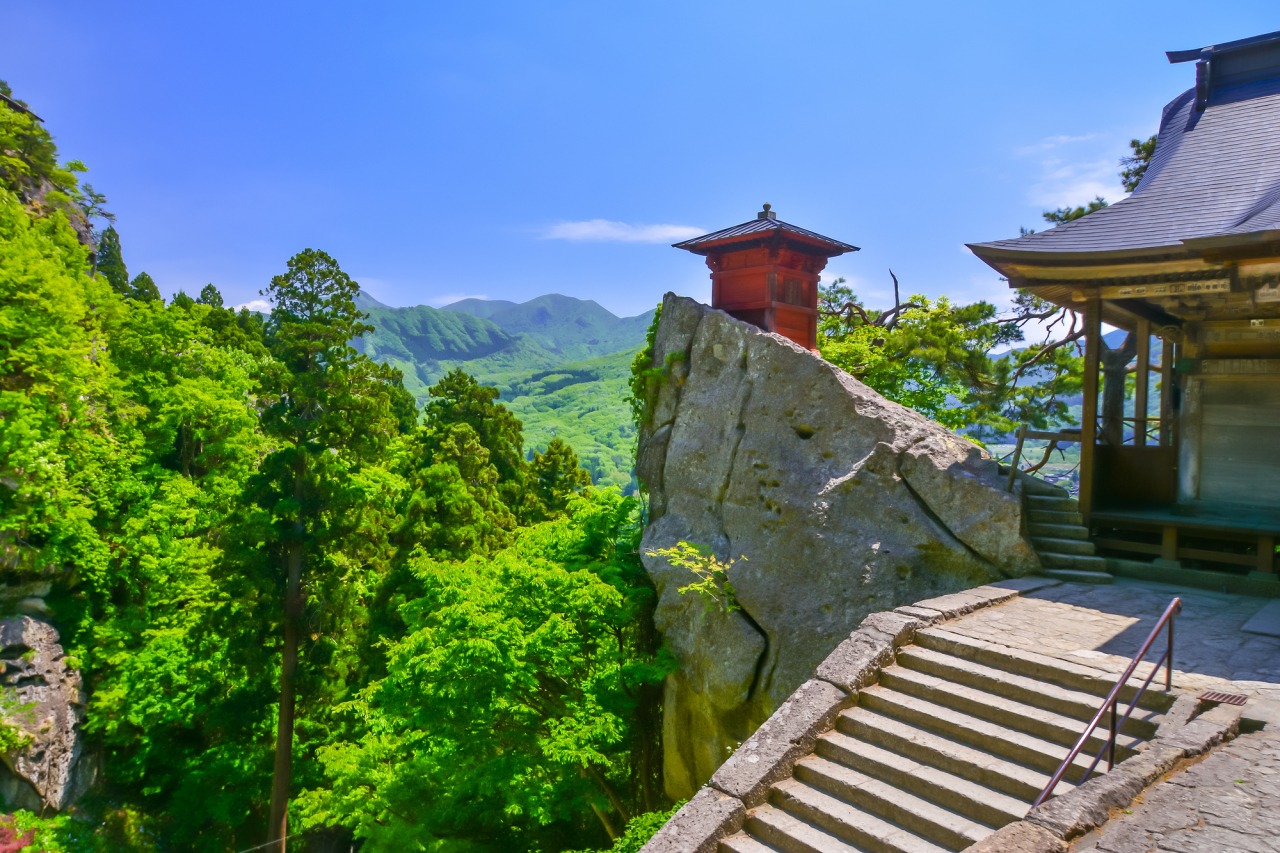

The Yamadera Temple (Hojusan Risshakuji Temple) is an old temple of the Tendai sect, founded by Jikaku Daishi Ennin in 860, and where Matsuo Basho composed his famous poem “Kayasaya (quietness), the voice of cicadas penetrating rocks”.
The royal route to Okuno-in Temple, which is reached by climbing 1015 stone steps, offers the best view of the temple from Kaizando and Godaido, which are built on a precipitous cliff.
In recent years, the number of foreign tourists has been increasing, and the temple is attracting worldwide attention as a place for ascetic practices where visitors can experience the spiritual culture of Japan.
The stone steps are for ascetic practice and are said to eliminate all worldly desires by climbing them, and the beautiful seasonal scenery can be enjoyed.
✅ Uesugi Shrine (Yonezawa City)
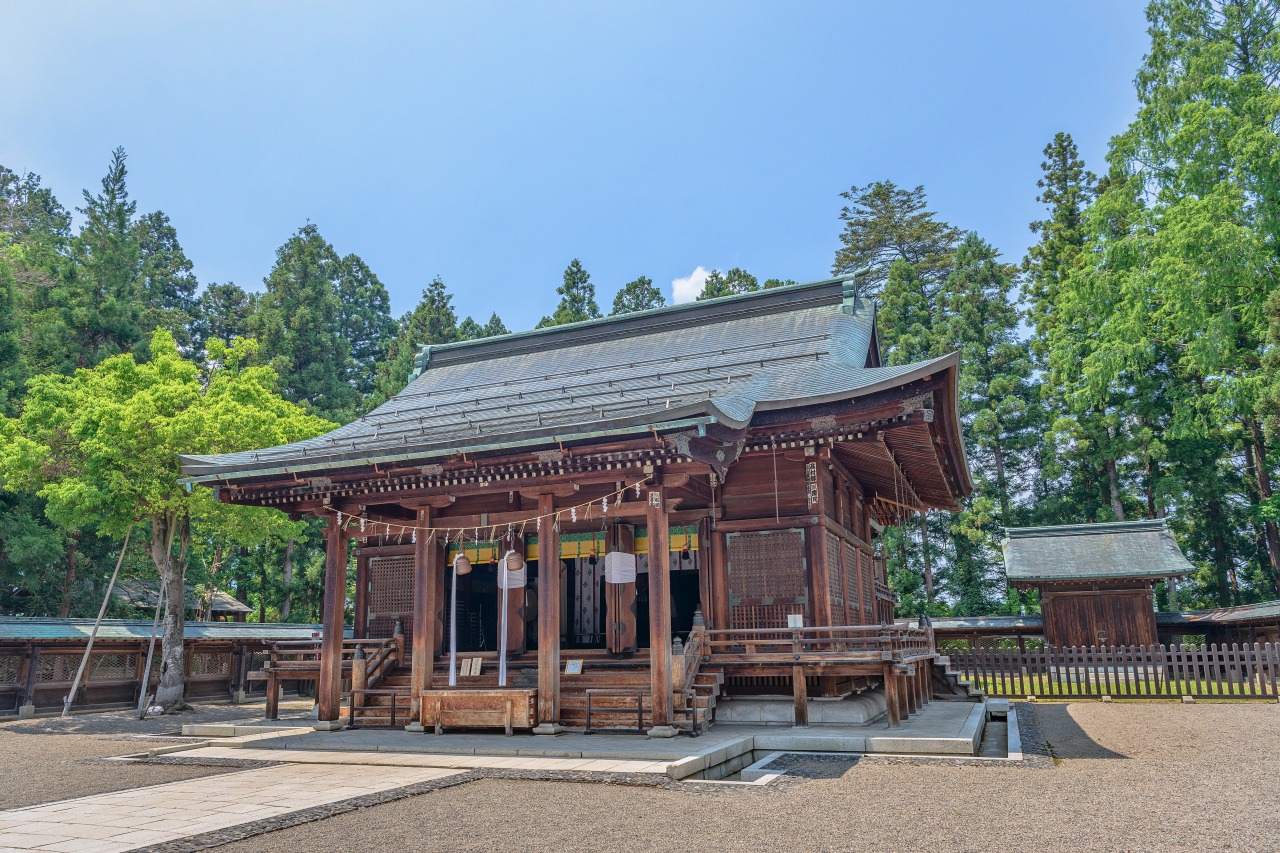

Uesugi Shrine was built on the site of the main citadel of Yonezawa Castle and is dedicated to Kenshin Uesugi, who is said to be the most powerful military commander in the Warring States period.
The Maizuru Bridge on the approach to the shrine is decorated with the military flags of “Bi” and “Ryu,” which are derived from Uesugi Kenshin’s deep devotion to Bishamonten (god of war) and Fudo Myoo (god of war).
In the Keishoden, important cultural assets, mainly relics of the Uesugi family, are displayed, and during the Yonezawa Uesugi Festival in spring, visitors can see an armor parade and a reenactment of the Battle of Kawanakajima.
The area is also a cherry blossom viewing spot with 200 cherry trees blooming along the water moat, and is dotted with Uesugi family historical sites that are attractive to history buffs.
There are many sights concentrated with history and culture, so if you are ever in the neighborhood, please stop by.
Let’s go to Yamagata to enjoy the real taste!
The best way to enjoy Yamagata’s imoni is to go there and enjoy the atmosphere, so I would like to recommend some items that would be good to take with you on your trip.
In this article, I would like to introduce some of my recommended travel items that can be purchased on Amazon.
Please use them as a reference when considering travel items.
If you are interested, check out the following products on Amazon!









